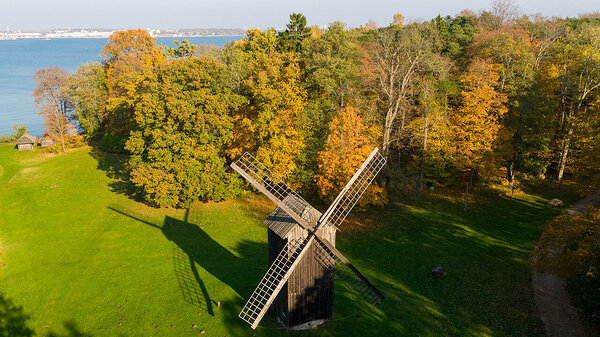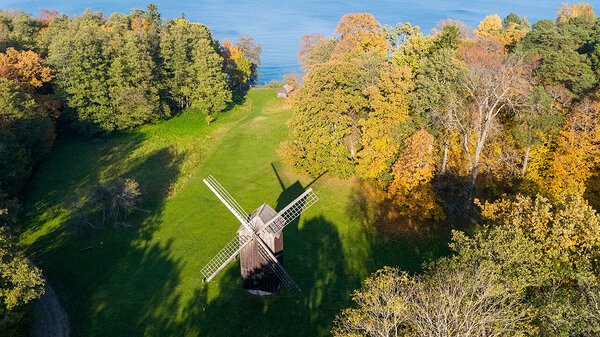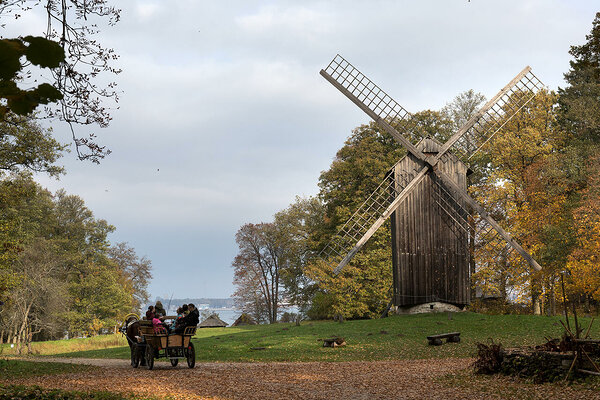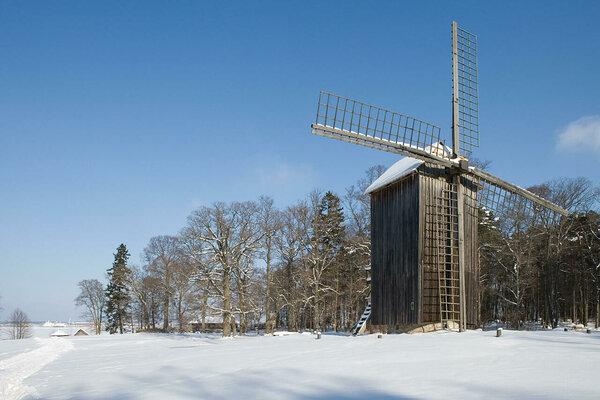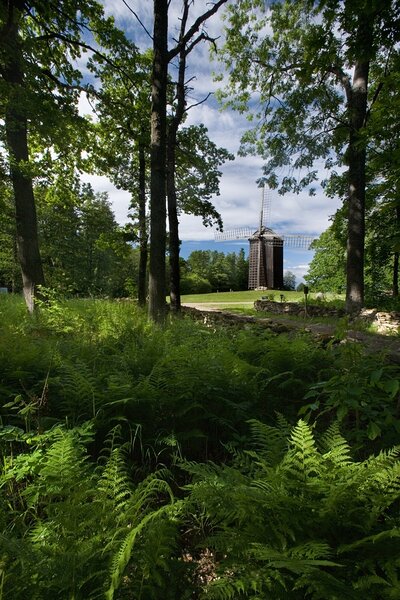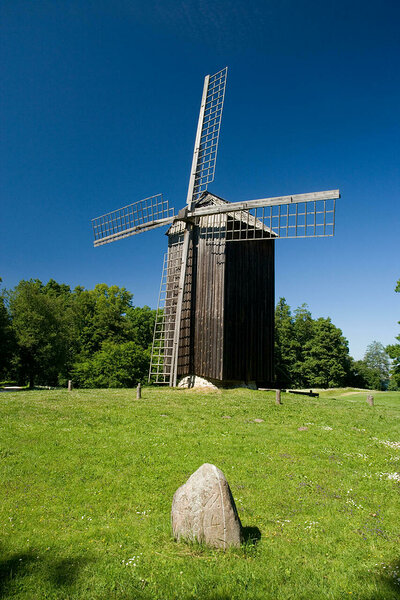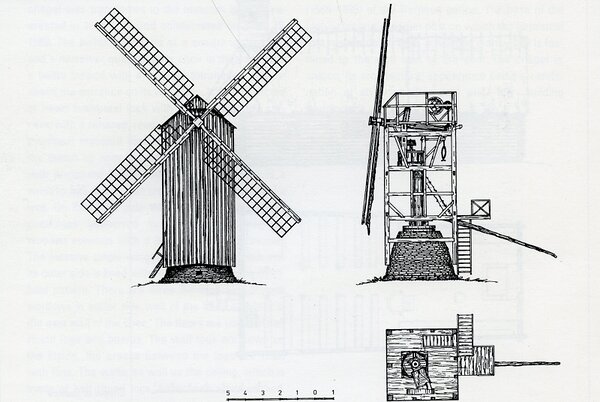From the late 19th century
Big post windmill comes from Vanasauna farm in Nätsi village, Mihkli parish, the southern part of Läänemaa County in Western Estonia. Allegedly, it was built in the second half of the 19th century on Pärdi-Madise farm in Rabavere village and was then sold to Nätsi village in Mihkli parish. The windmill was owned by different farms in the course of time, until Ants Kümmel, a cotter from Vanasauna farm, bought it after the First World War. He enlarged the windmill and started to grind flour for villages in the neighbourhood. The windmill was transferred to the museum in 1959 and opened in 1960.
The bulky body of the windmill, clad in boards, is mounted on a large upright post. A crown tree which balances the mill body and supports the intermediate ceiling is fastened crossways on top of the central pole. To make the windmill work, sailcloth or wooden shutters were attached to the sails (with the length of 8.4 meters) and the whole windmill was turned by the tail pole to face the wind. The milling mechanism, which consists of the wind shaft with the brake wheel and large millstones, is located on the upper floor; the flour ran into the flour box located on the ground level. The local farmers had to pay a certain toll for milling their grain. So, the miller Ants Kümmel claimed 6 toops of grain as a fee for his work for grinding 9 puuds of rye or 8 puuds of barley (old measures: 1 Tallinn toop = ~1 litre; 1 puud = 16.4 kg).Did you know?
- Originally, Nätsi windmill was used by a single family, until it was bought by Ants Kümmel from Vanasauna farm who wanted to make money on grinding grain. He enlarged the mill and replaced the granite millstones with cast ones.
- The legend has it that the miller Ants needed a strong and straight crown tree for his windmill. There was a suitable tree growing in the park of Audru manor, but obviously he could not fell it there. But still, on a stormy November night seven men of the family did the job and the tree was gone by the morning, even the stump was buried under turf. And, nobody seemed to miss the tree in the manorial park.
- The busiest season for milling was autumn. With favourable wind, the windmill was working day and night, except for Saturday and Sunday nights. If the wind was good, the mill was able to grind up to two tons of grain per day.
- Nätsi windmill produced bread flour, meal feed for animals, coarse meal and groats.

